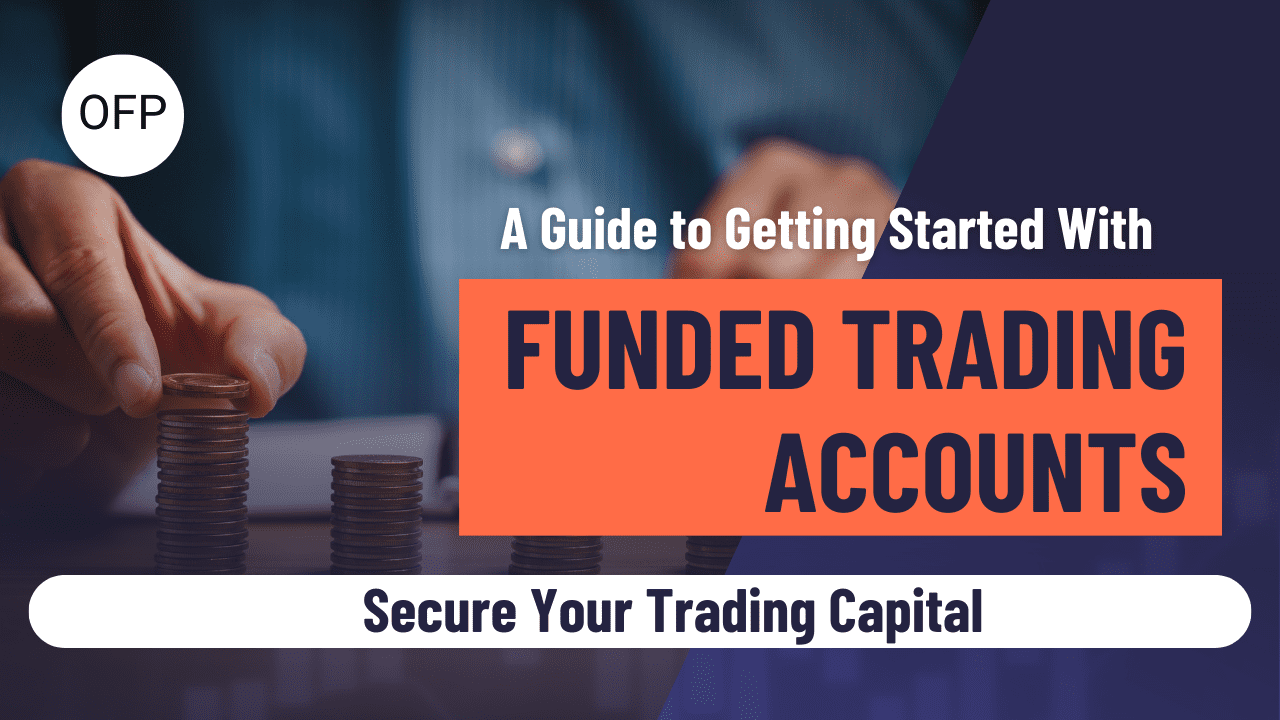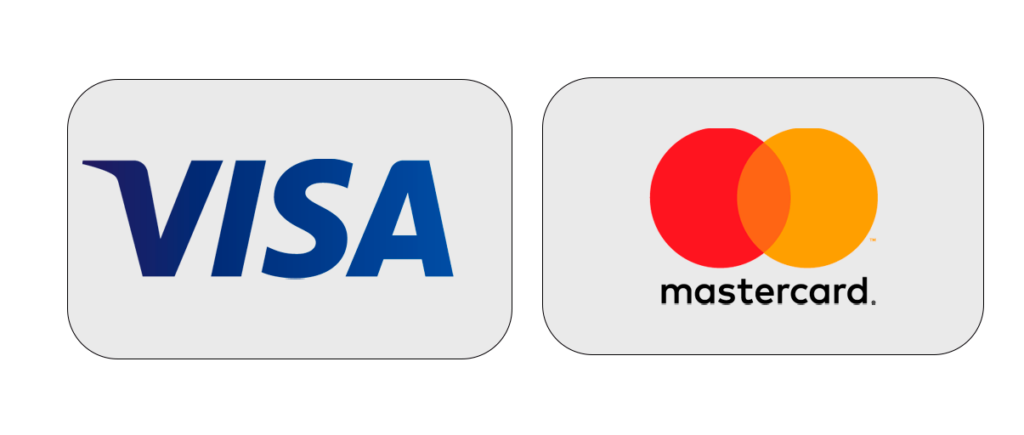
For many aspiring traders, the greatest obstacle to success isn’t a lack of skill or knowledge—it’s the lack of sufficient capital. Without enough funds to trade, even the most talented traders may find it difficult to fully capitalize on their market expertise. Fortunately, there are several avenues available for traders to secure the necessary capital, one of the most popular being funded trading accounts.
Understanding Funded Trading Accounts: The Key to Expanding Your Trading Potential
Funded trading accounts have become an increasingly popular option in recent years, offering traders the opportunity to access substantial capital without the need to risk their own money. These accounts are provided by companies that specialize in offering trading capital to skilled traders in exchange for a portion of the profits. This model not only allows traders to scale up their operations but also introduces a structured environment that promotes disciplined and responsible trading practices.
The concept of funded trading accounts, or capital-providing trading firms, began to gain traction in the mid-2010s. In 2014, a small group of day traders in Prague laid the foundation for what would eventually become a significant movement in the retail trading industry. These traders recognized a gap in the market—a need for skilled traders who lacked the capital to fully leverage their expertise. Their solution was to create a system where traders could prove their abilities and, in return, receive access to the funds necessary to trade on a larger scale.
The Appeal of Funded Trading Accounts
Today, the appeal of funded trading accounts is evident. They provide an accessible path for traders who might otherwise struggle to gather the resources needed to succeed in the competitive world of financial trading. For traders with the right skills and mindset, these accounts can offer a way to break free from the limitations of personal capital constraints.
One of the primary advantages of funded trading accounts is the ability to trade with significantly larger sums of money than most individual traders can afford. This can amplify the potential returns for successful trades. Additionally, the risk management policies that accompany these accounts help to mitigate the chances of catastrophic losses, making it a more secure way to engage in trading activities.
How to Secure Funding for Trading
Obtaining a funded trading account typically involves several key steps. While each funding company may have its own specific criteria and requirements, the general process follows a similar pattern. Understanding this process can help aspiring traders navigate the path to securing a funded account.
- Evaluation Phase: Proving Your Trading Skills: The first step in securing a funded trading account is to successfully complete an evaluation phase. This phase is designed to test a trader’s skills and ensure that they have the discipline and expertise needed to manage a larger account. The evaluation usually involves trading on a simulated account over a period of time, typically 30 to 60 days. During this time, traders are required to follow a specific set of rules and risk management guidelines. The evaluation process is rigorous by design. Companies offering funded accounts need to ensure that the traders they back are capable of making profitable trades while managing risk effectively. This phase serves as a trial period, allowing the funding company to assess the trader’s performance under real market conditions, albeit in a simulated environment.
- Meeting the Requirements: Clearing the Hurdles: To move beyond the evaluation phase and secure a funded account, traders must meet specific requirements. These requirements often include achieving a profit target, maintaining a minimal drawdown, and strictly adhering to the company’s risk management policies. The standards are set deliberately high to ensure that only the most capable and disciplined traders are awarded real capital. Achieving the profit target is often the most challenging aspect of the evaluation process. Traders must not only be profitable but also demonstrate consistency in their trading results. This requires a well-thought-out strategy, precise execution, and the ability to manage emotions, particularly during periods of market volatility. Drawdown limits are another critical component of the evaluation process. A drawdown refers to the peak-to-trough decline during a specific period of trading. Companies impose strict drawdown limits to ensure that traders do not take excessive risks that could lead to significant losses. Meeting these requirements proves to the funding company that the trader can manage their account responsibly, even under pressure.
- Securing the Funded Account: Gaining Access to Capital: Once a trader successfully passes the evaluation phase, they are granted a funded trading account. The amount of capital provided varies depending on the program chosen and the trader’s performance during the evaluation. With this account, traders are allowed to keep a percentage of the profits they generate, while the funding company takes the remainder as compensation for providing the capital. This profit-sharing model is mutually beneficial. Traders gain access to the capital they need to scale their operations, while the funding company earns a return on its investment by backing successful traders. The exact percentage split of profits can vary between different companies and programs, so traders should carefully consider the terms before committing.
- Ongoing Trading Rules: Maintaining Your Funded Status: Securing a funded trading account is just the beginning. To maintain the account and continue trading with the provided capital, traders must adhere to ongoing trading rules and risk management policies. These rules are in place to protect both the trader and the funding company from undue risk. Common trading rules include limits on position sizes, restrictions on trading certain instruments, and maximum allowable drawdowns. Traders must follow these rules closely; failure to do so can result in the loss of the funded account. This creates a disciplined trading environment, encouraging traders to make decisions that prioritize long-term success over short-term gains. Some traders may find these rules restrictive, but they are essential for maintaining the integrity of the funded account system. By enforcing strict guidelines, funding companies ensure that their capital is being used wisely and that traders are not taking excessive risks that could lead to substantial losses.
- Understanding the Costs: Fees and Profit-Sharing: It’s important to understand that securing and maintaining a funded trading account comes with certain costs. Most companies charge a one-time fee for the evaluation process. This fee can vary depending on the size of the account the trader is seeking. The evaluation fee covers the costs associated with setting up the simulated account, monitoring the trader’s performance, and other administrative expenses. In addition to the initial evaluation fee, traders are often required to pay a monthly subscription fee once they have secured a funded account. This fee typically covers the cost of the trading platform, data feeds, and other services provided by the funding company. While these costs may seem daunting at first, they are often outweighed by the benefits of gaining access to substantial trading capital.
Challenges in Getting Started with Funded Trading Accounts
While funded trading accounts offer a promising path for traders looking to scale up their operations, they are not without challenges. Traders should be aware of several potential obstacles that may arise when pursuing this option.
- The Rigorous Evaluation Process: High Standards for Success: The evaluation phase is designed to be challenging. Funding companies need to ensure that they are backing only the most capable traders, which means the standards are set high. The pressure to perform within a limited timeframe, combined with the need to follow specific rules, can be intense, particularly for less experienced traders. During the evaluation, traders must balance the need to meet profit targets with the requirement to manage risk effectively. This can be a difficult balancing act, especially when market conditions are volatile. Traders who are unable to manage their emotions and stick to their strategy may struggle to pass the evaluation.
- Profit-Sharing Agreements: A Trade-Off for Capital Access: One of the key trade-offs of securing a funded trading account is the profit-sharing arrangement. While traders gain access to the capital they need to make larger trades, they must also share a percentage of their profits with the funding company. This means that traders take home less than if they were trading with their own funds. The profit-sharing model is fair, given that the funding company is taking on the financial risk. However, traders should carefully consider whether this arrangement aligns with their financial goals. For some, the benefits of accessing larger amounts of capital outweigh the cost of sharing profits. For others, the reduction in take-home pay may be a deterrent.
- Strict Risk Management Policies: Essential but Restrictive: Funded trading accounts come with strict risk management policies that traders must adhere to at all times. These policies are designed to protect the funding company’s investment and ensure that traders do not take excessive risks that could lead to significant losses. While these policies are essential for maintaining a stable trading environment, they can also feel restrictive to traders who prefer more autonomy in their trading strategies. For example, a trader may feel confident about a particular trade but be unable to execute it due to the risk management rules in place. This can be frustrating, especially for traders who are accustomed to having more flexibility in their trading decisions.
- Limited Trading Flexibility: Balancing Creativity and Compliance: The need to adhere to the company’s trading rules can limit a trader’s freedom and creativity. Traders may find themselves constrained by the need to follow prescribed trading methods and strategies, which can stifle their ability to innovate or adapt to changing market conditions. This lack of flexibility can be a significant challenge for traders who are used to operating independently. However, it’s important to remember that these restrictions are in place to protect both the trader and the funding company. By enforcing a structured approach to trading, funded accounts help traders develop the discipline needed for long-term success.
Is a Funded Trading Account Right for You?
The decision to pursue a funded trading account depends on several factors. Traders should consider their financial situation, risk tolerance, and trading style when deciding whether this option is the right fit for them.
For traders with a solid strategy and a proven track record, funded accounts offer a way to scale up and access larger amounts of capital. This can be particularly advantageous for traders who lack the personal funds to make meaningful trades. The opportunity to trade with substantial capital can significantly increase the potential for profits, provided that the trader adheres to the required risk management guidelines.
However, the restrictions and profit-sharing arrangements might not appeal to everyone. Some traders prefer to trade with their own capital, retaining full control over their profits and trading strategies. For these traders, the cost of securing a funded account—both in terms of fees and reduced earnings—may outweigh the benefits of access to additional capital.
Final Thoughts: Navigating the Path to Funded Trading
Securing a funded trading account can be a game-changer for skilled traders looking to scale their operations. The opportunity to trade with substantial capital without risking personal funds is an attractive proposition. However, the road to securing such an account is paved with challenges, including a rigorous evaluation process, strict trading rules, and profit-sharing requirements.
For those willing to navigate these challenges, funded trading accounts offer a viable path to greater market participation and potential profits. Understanding the nuances of how these accounts work, the associated costs, and the potential limitations is crucial for making an informed decision.
Whether you’re an experienced trader looking to expand your capital base or a newcomer aiming to break into the trading world, exploring funded trading accounts could be the next step in your journey to trading success. By carefully weighing the pros and cons, you can determine whether this path aligns with your trading goals and financial aspirations.





 CLAIM BEST 80% ACCOUNT MODEL: NO CHALLENGE, JUST INSTANT FUNDING
CLAIM BEST 80% ACCOUNT MODEL: NO CHALLENGE, JUST INSTANT FUNDING